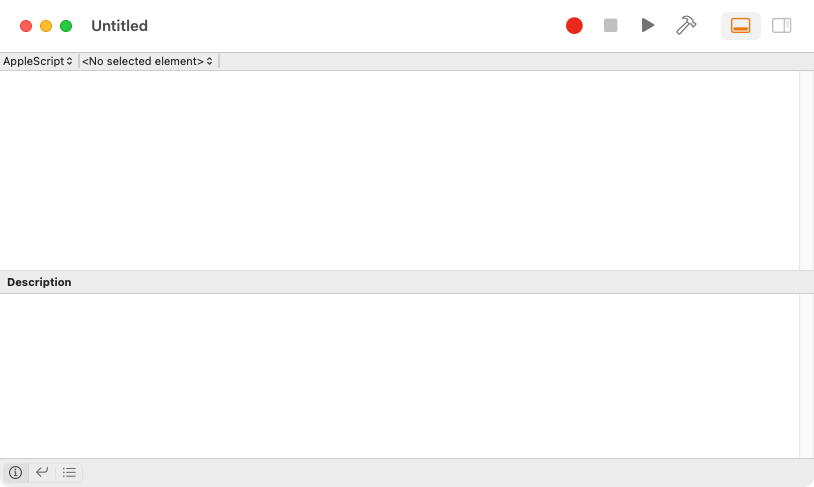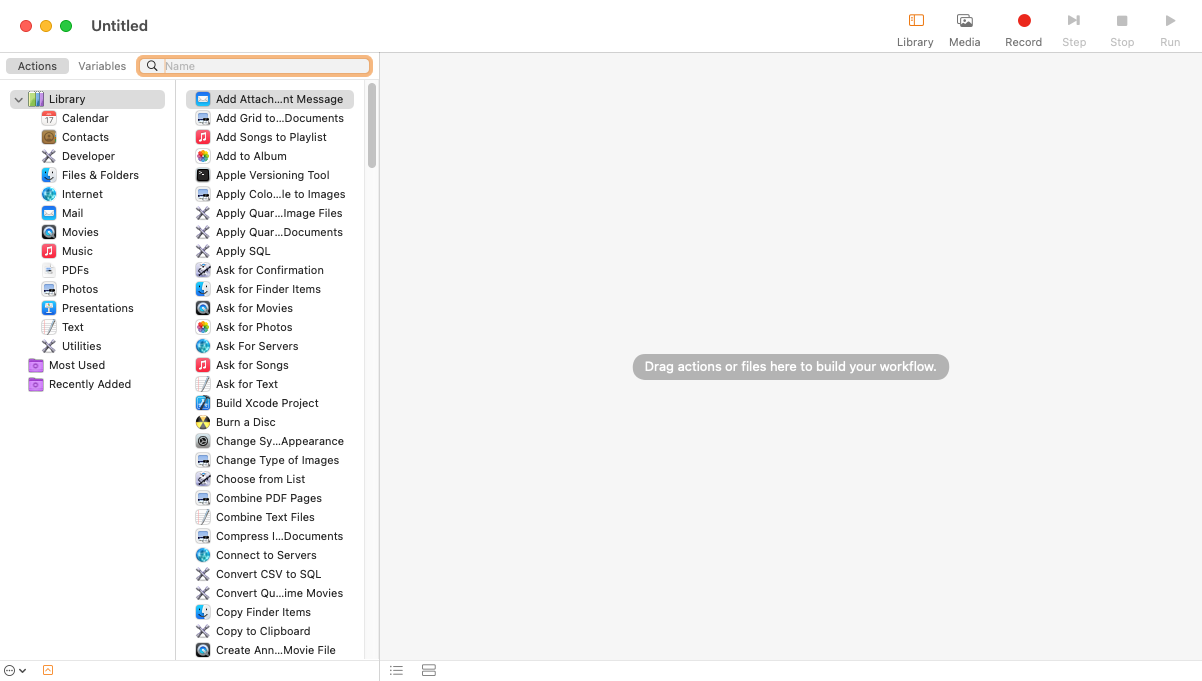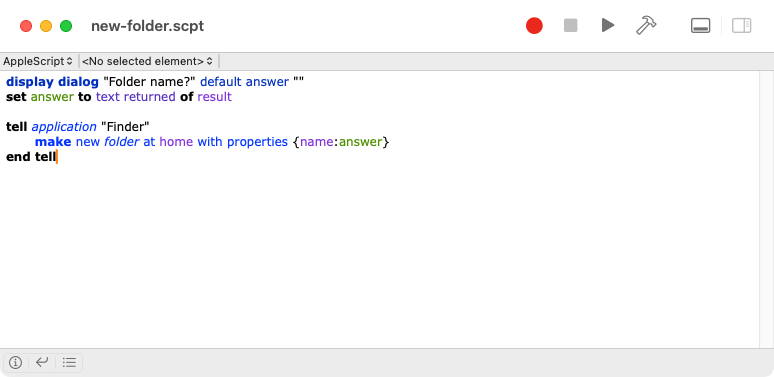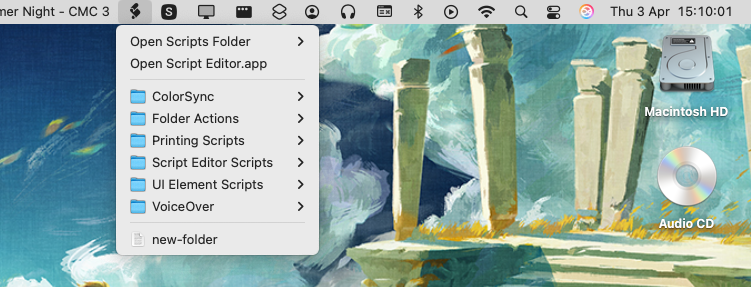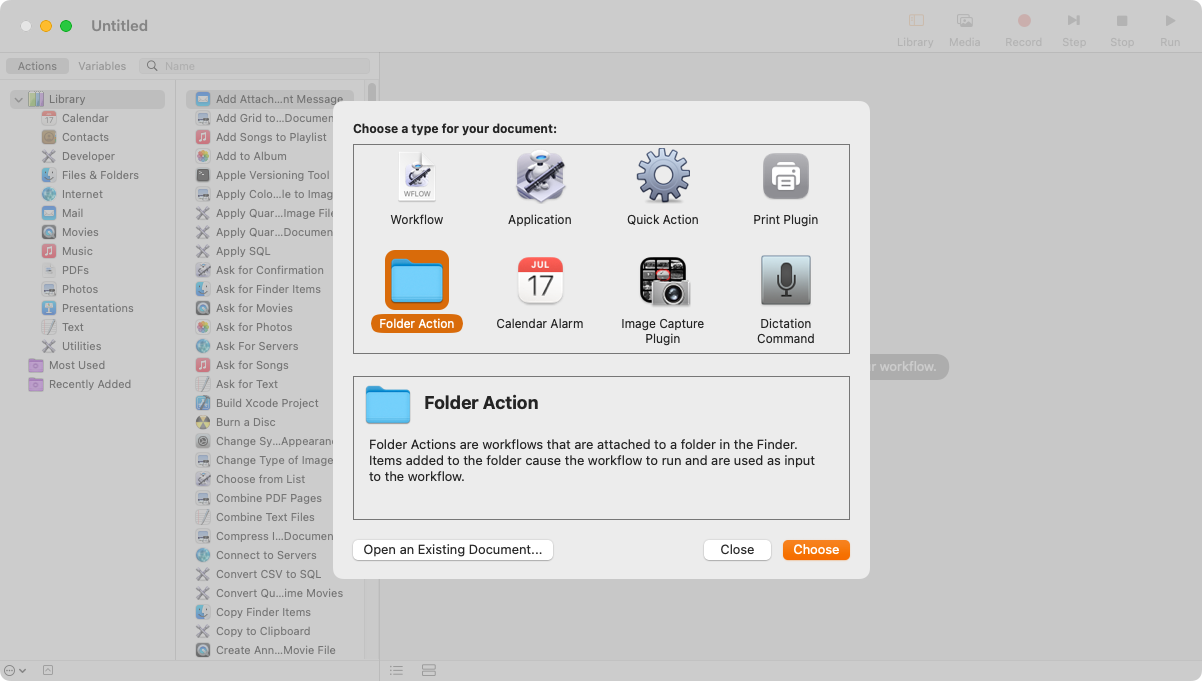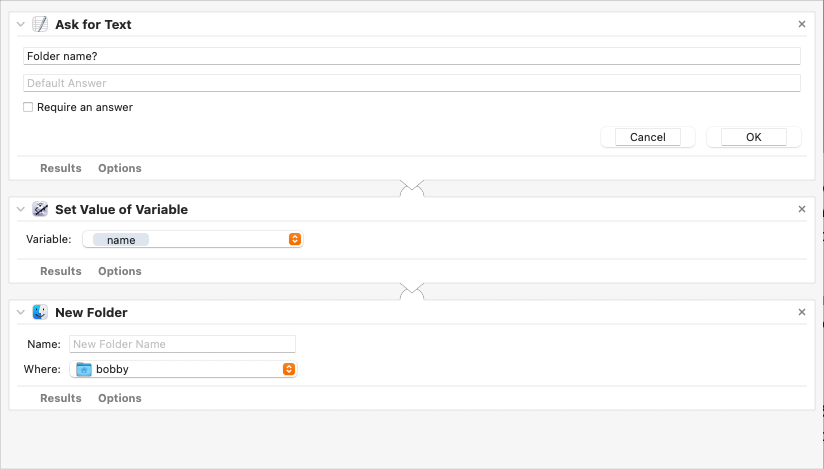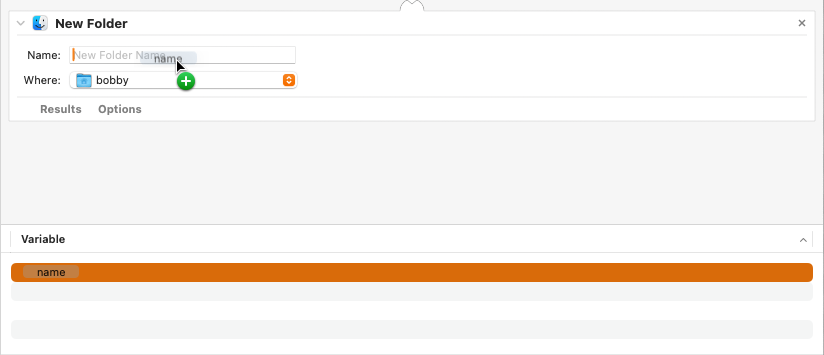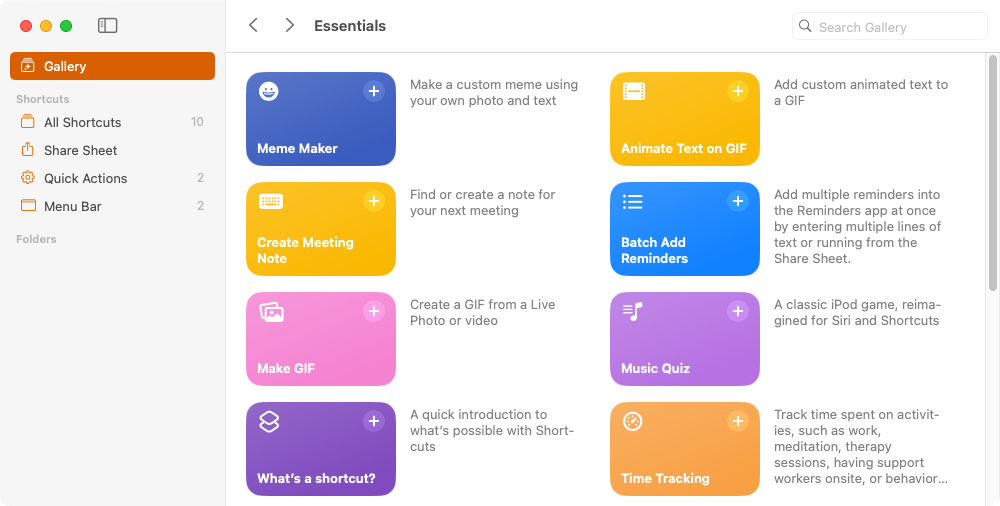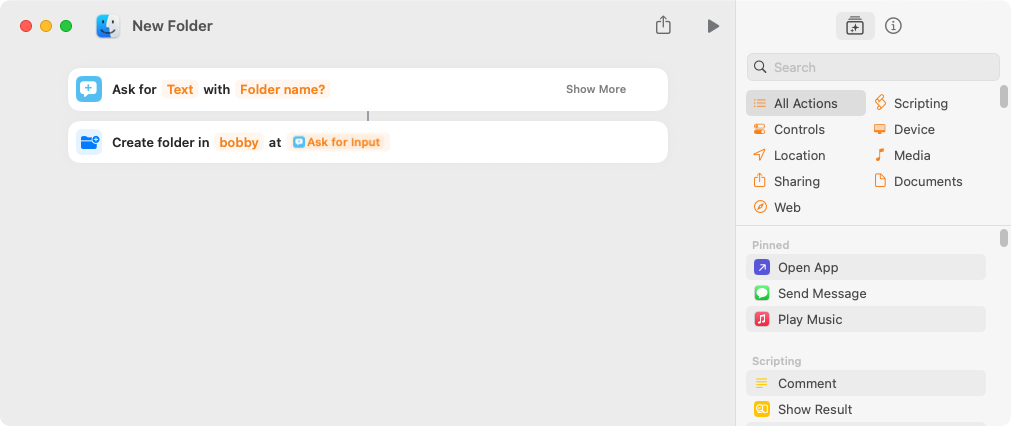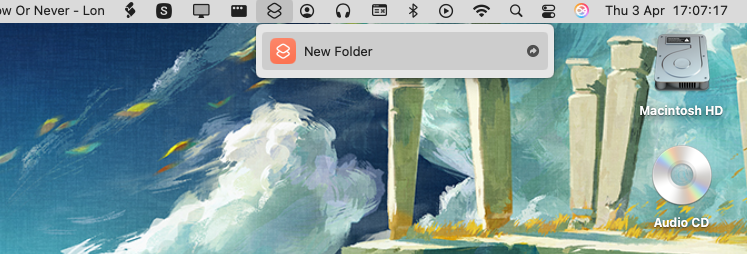Summary
- macOS offers 3 automation apps: Script Editor, Automator, and Shortcuts, each uniquely designed.
- Shortcuts is the most modern and user-friendly automation tool for iOS and desktop.
- Script Editor is best for niche tasks but outdated; Automator is versatile with various workflow types.
If there’s a task you carry out repeatedly, stop and think: can you automate it? With these apps, there’s a good chance you can.
A Short History of macOS Automation
macOS comes with three apps to automate tasks: Script Editor, Automator, and Shortcuts. While these apps have similar goals, their approaches are quite different. The presence of all three demonstrates Apple’s changing approach and a commitment to backward compatibility that’s quite unusual in macOS.
Script Editor introduced the AppleScript language in October 1993, when the operating system was called System 7. The app is still bundled with macOS today, over 30 years later. However, Script Editor is all but deprecated and you’ll almost certainly only want to use it for legacy code—maintaining old scripts that someone else wrote.
Launching in April 2005, Automator was a radical overhaul of Script Editor. This app introduced the workflow as the automation method, letting you drag various actions into a sequence and pass data between them. It also lets you integrate AppleScript programs and shell scripts into your workflow, for more advanced uses.
Finally, arriving on macOS in 2021, came Shortcuts, a similar app to Automator for iOS devices. Shortcuts pared back the interface to make automation a lot less intimidating and provides a sizeable gallery of pre-written shortcuts covering many common uses.
Which Automation App Should You Use?
The simplest answer is, of course, to use the most modern tool for the task: Shortcuts. This app has a gentler learning curve and will continue to receive updates for the foreseeable future, so it makes sense as the default choice.
However, each approach has its benefits. It’s good to know exactly what each can do, and how it might best help with your task. To explain their differences, I’ll show you how to complete a simple task in each: creating a new folder, with a custom name, in your home directory.
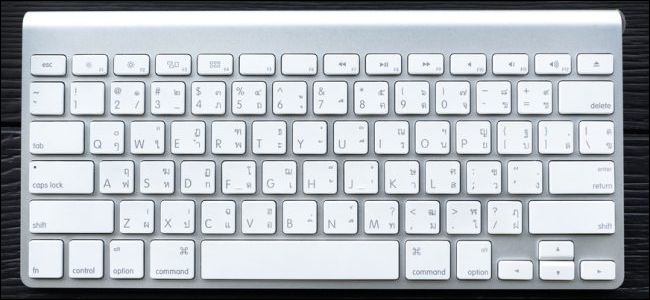
Related
The 6 Best Tools for Customizing Mac Keyboard Shortcuts
macOS has some useful keyboard shortcuts out of the box, but many apps on the market extend what you can do with the click of a few buttons.
Script Editor: Old-School AppleScript
Script Editor is little more than a text editor for AppleScript files. It has a minimal interface which is centered around the code you write in the language. So it can take a while to get started with Script Editor, but you may find it offers more underlying power for niche tasks.
Script Editor is available on almost any Mac, even on Classic Mac OS. On modern macOS, it’s a little buried; you’ll find it in the Applications/Utilities folder.
Since 2014, Script Editor has supported JavaScript as an alternative language, although AppleScript remains the default and most popular option.
The first part of the folder task involves user input, which you can request using a dialog:
display dialog "Folder name?" default answer ""
set answer to text returned of result
With a name, the remainder of the task is simply to create a folder using it. AppleScript’s tell block lets you communicate with an application, passing it instructions to carry out—providing it understands those instructions, of course. For this purpose, the Finder app will let you create a new folder, passing its name using the variable you used earlier:
tell application "Finder"
make new folder at home with properties {name:answer}
end tell
This code is fairly readable compared with many other scripting languages because AppleScript uses elements of natural-language programming to approximate real-world language. While this doesn’t necessarily make it any easier to write, it does mean that AppleScript code should be understandable, even by non-experts.
The Script Editor app also caters for users who don’t wish to write any code with its recording function. This lets you start a recording, carry out the task you’re trying to automate, then stop and save the resulting actions as a script. You can use this feature to discover more about how AppleScript works, but the resulting scripts won’t be very efficient and may not work in broader contexts, so you may still need to edit them manually.
Script Editor saves your files with the .scpt extension and displays files saved in its default location in a menu bar app:
Automator: Less Typing, More Options
Automator is available on all Mac OS releases from Tiger (10.4) onwards, so you can use it unless you’re on a very old Mac. When you open the app and create a new document, it will ask you to choose a type:
This is the first key departure from Script Editor; the type you choose will affect how your script runs. The default Workflow runs from with the Automator app, but an Application can run as a standalone app and a Quick Action can show up in Finder or the Services menu. It’s worth exploring the options here to decide exactly which type of automation you want to create.
In the case of our new folder example, the closest analogy is the default Workflow. However, if you want to modify the example, you could create the new folder in a user-specified location, and this would make the most sense as a Finder Quick Action.
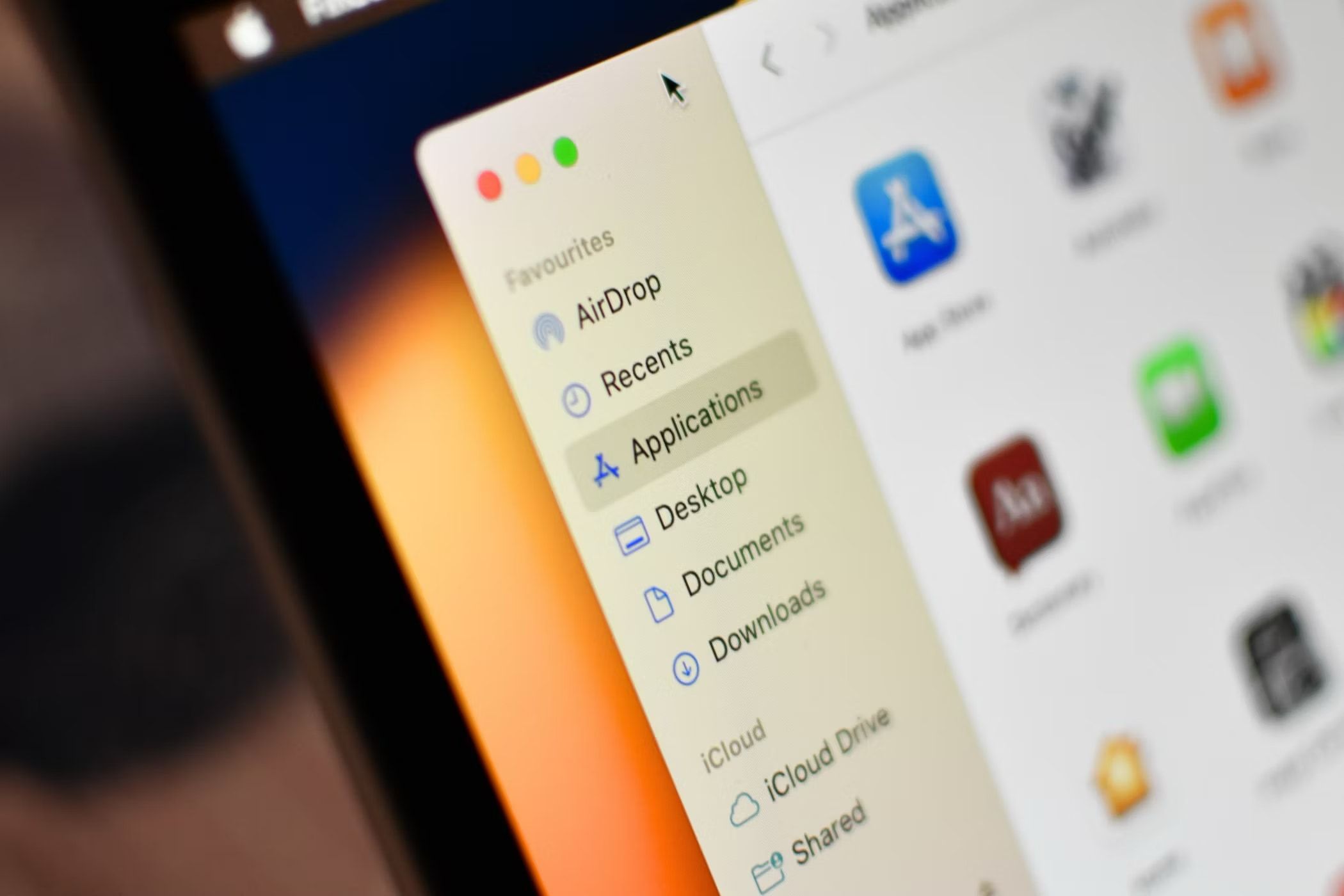
Related
Finder vs. Windows Explorer: Differences Every Mac Switcher Needs to Know
Finder is Windows Explorer’s prettier cousin, but it can be a bit difficult to figure out.
Once you’ve created a new Workflow, you can drag and drop Actions into it from the left-hand list. Search for “Ask for Text” and drag in the Action of that name, then change its Question to “Folder name?.” Add a “Set Value of Variable” Action to store the value entered into the dialog. Then, add a “New Folder” Action and choose your home directory as its “Where” location.
The final piece of the puzzle involves injecting the variable into the “Name” field of the “New Folder” action. It’s not at all obvious how to do this: choose View > Variables from the menu to display a variable list at the bottom of the screen, then drag your variable into the name field:
Automator brings a lot more to the table than usability. It can run shell scripts and even web services, and the workflow types support behavior like only running a script when the contents of a folder change, so they’re versatile too.
Shortcuts: A Mobile-First Approach
The Shortcuts app originated on iOS, where it launched in 2015 as a third-party app named Workflow. After renaming it “Shortcuts” in 2018, Apple ported it to the desktop in 2021, essentially as a replacement for Automator.
Like many modern default Mac apps, Shortcuts is heavily influenced by its iOS counterpart. With a minimal interface and a wealth of useful shortcuts, automating your tasks is faster than ever:
In a departure from Script Editor and Automator, Shortcuts has no facility to record actions and automate them. Perhaps this is because Apple considers the app to be simple enough without this feature, or maybe it’s an acceptance that the recording method is just not feasible.
Using Shortcuts to create a new folder shortcut is very similar to using Automator: create a new shortcut, search for actions, and then drag them into the main panel. It’s a little simpler, however, because the variable is already available for you to use, so there are just two steps:
Like Script Editor, you can run your shortcut directly from an icon in the menu bar:
With three different options, there’s a lot of choice. It mostly boils down to what you’re familiar with and which technology you want to use. AppleScript is a mature technology, but Shortcuts are more cross-platform. If you want to record a task to automate, Shortcuts won’t help you; you’d be better off with Automator.


